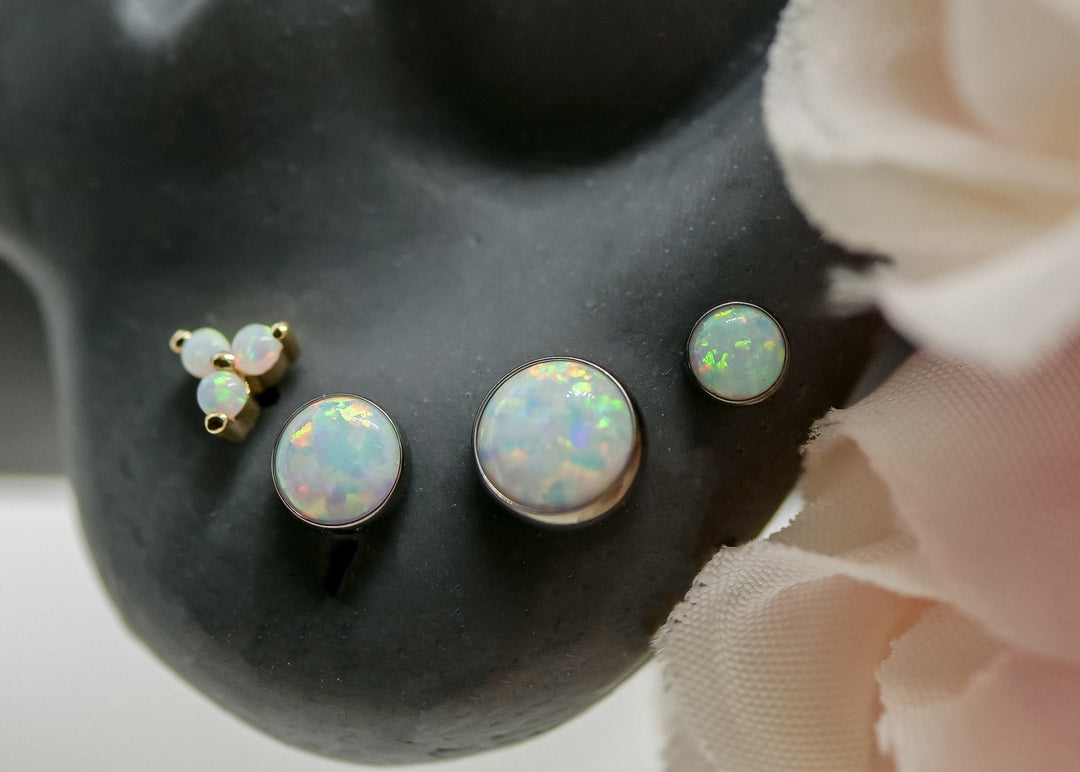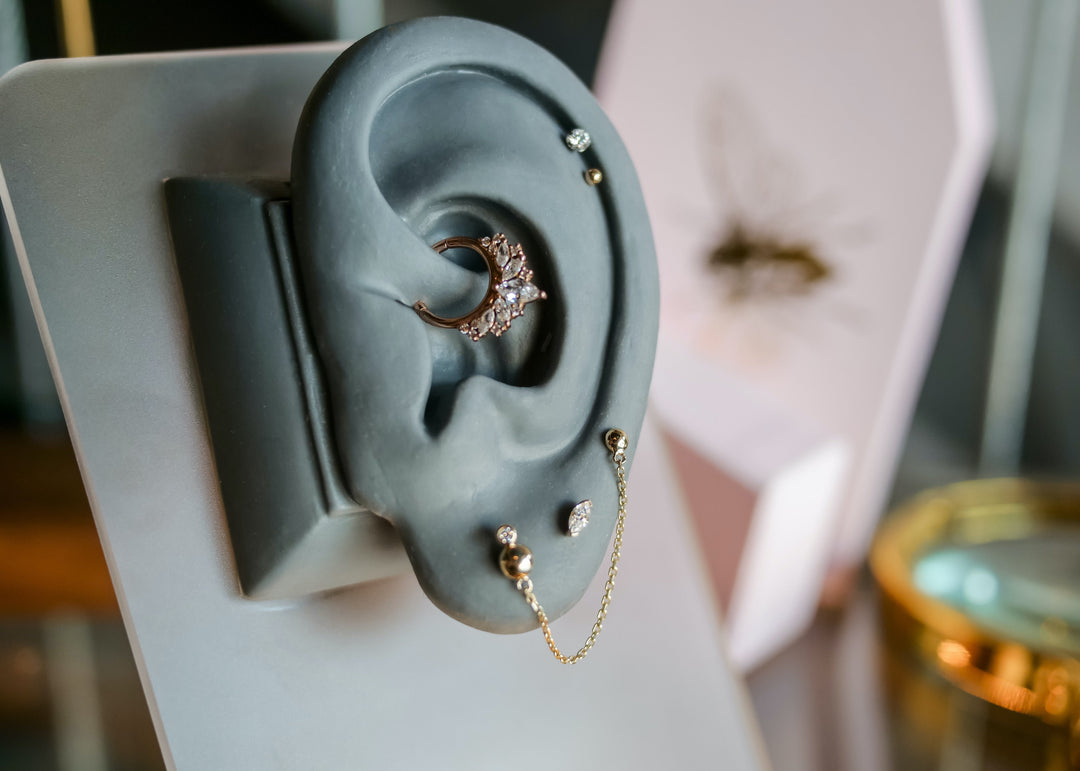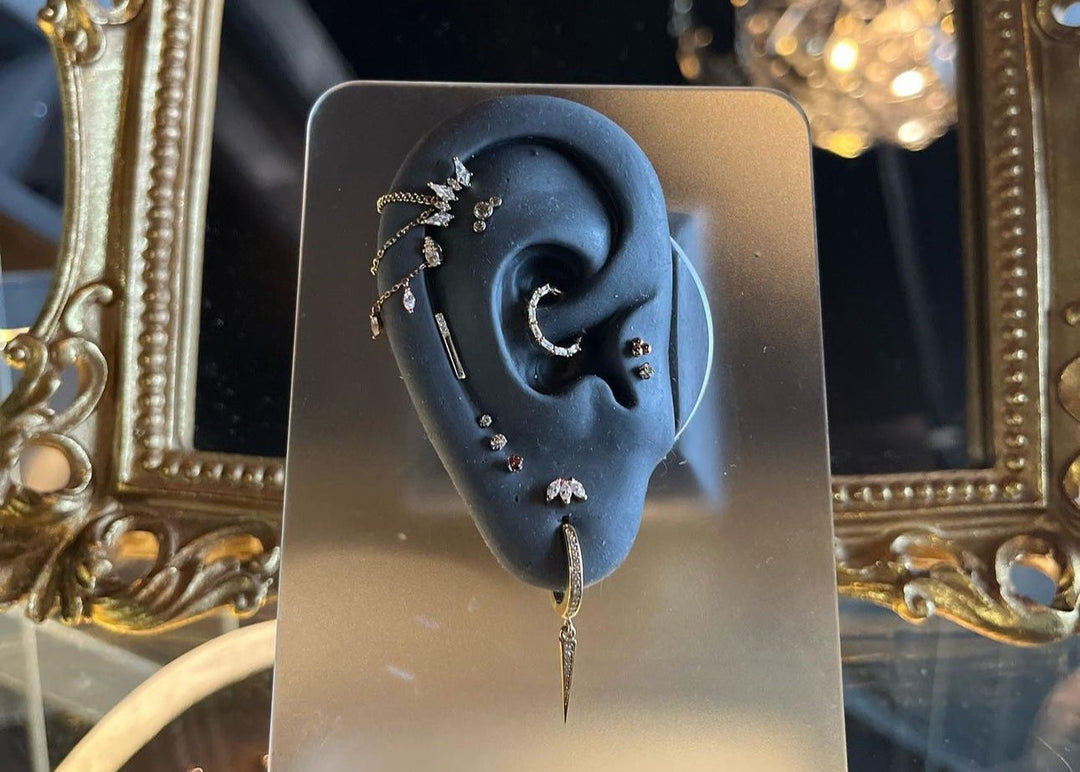From ancient ritual to rebellion to radical self-love.
Piercing is one of humanity’s oldest art forms.
Long before it was a fashion statement, it was a language — a mark of belonging, courage, or spirituality. It’s existed everywhere from Egyptian tombs to South Asian temples to queer nightclubs.
At Body Altar, we see piercing as part of that lineage — an ancient conversation about adornment, autonomy, and identity.
But to understand why modern piercing feels so empowering, you have to understand where it came from.
1. Ancient Adornment
Piercing predates written history.
Archaeologists have found evidence of pierced ears on mummies dating back over 5,000 years, while texts and sculptures from the Middle East, India, and Africa show nose, lip, and genital piercings tied to fertility, status, and spirituality.
In South Asia, nose piercings were (and still are) associated with Ayurveda and womanhood — often marking rites of passage or marital status.
In Africa, lip and ear piercings denoted tribe, power, and identity.
In Indigenous North American communities, body modification symbolized ceremony and connection to the divine.
In other words: piercing wasn’t rebellion. It was reverence.
2. The Western Detour
By the Victorian era, Western culture had turned body modification into taboo.
Piercings were hidden, sanitized, or shamed — seen as improper for women and “deviant” for men.
That stigma lasted until the late 20th century, when queer, punk, and fetish subcultures reclaimed the needle.
Piercing became a symbol of resistance, of visibility in a world that wanted conformity.
Studios emerged underground, often queer-run and DIY — acts of defiance wrapped in steel and autonomy.
That rebellion built the professional industry we know now.
3. The Feminist Revival
Today, piercing has come full circle.
What was once forbidden is now a form of feminist expression — not because it’s trendy, but because it’s self-authored.
Women, femmes, and queer people are reclaiming adornment on their own terms.
A curated ear or gold septum isn’t about being provocative; it’s about being present.
It’s about choosing how your body is seen — or not seen — in a world still obsessed with controlling that image.
Piercing is feminist because it’s personal.
It’s one of the few aesthetic decisions that isn’t dictated by beauty standards, marketing, or algorithms.
It’s chosen, not sold.
4. The Modern Sacred
At Body Altar, we treat piercing as a sacred act — not religious, but intentional.
Every piercing marks something: power, healing, transition, curiosity, freedom.
We pierce with precision, ethics, and respect for the traditions that came before us — from Indigenous adornment to queer resistance.
We don’t separate beauty from meaning. We honor both.
This is the new feminism of body art: inclusive, informed, and self-owned.
5. The Future of Adornment
Piercing is no longer about rebellion or respectability. It’s about sovereignty.
It’s the quiet moment where you decide what your beauty looks like — and who it’s for.
Whether it’s a dainty gold stud or a full constellation ear, every piercing is a small act of revolution.
Not against the world — but for yourself.






